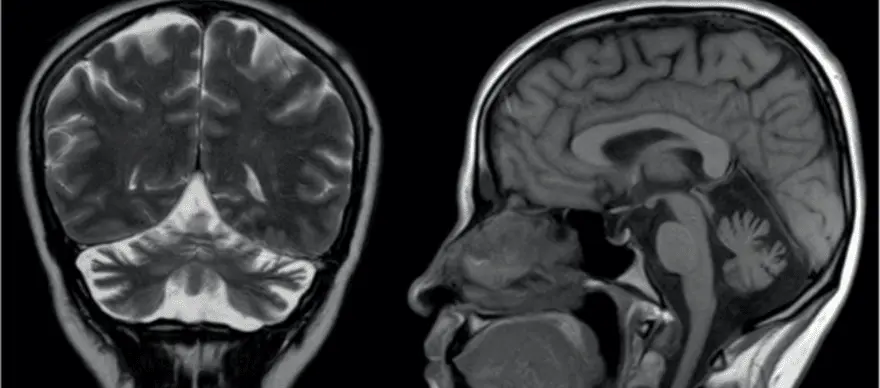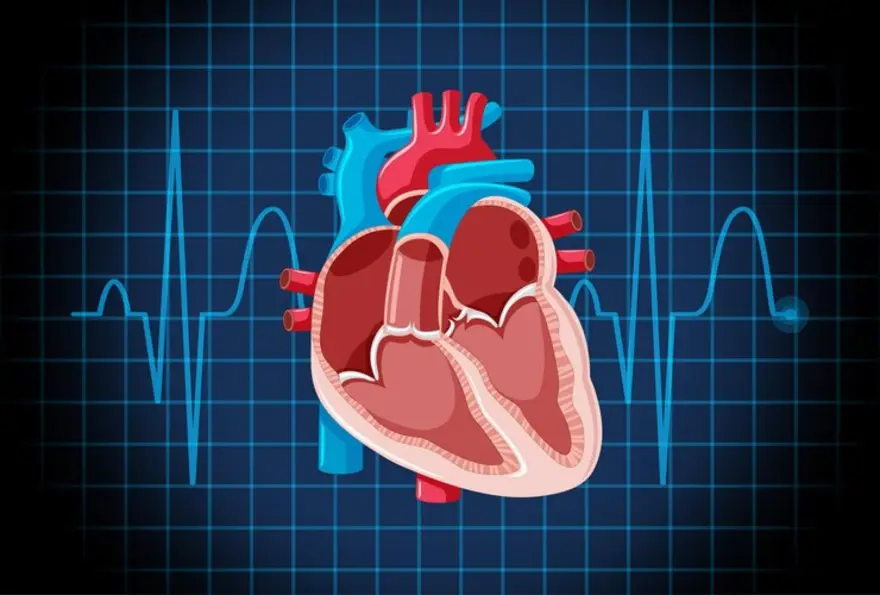Health Wellness
Spinocerebellar Ataxia: Types, Symptoms, Causes, Diagnosis and Treatment
5957 Views
0

What is Spinocerebellar Ataxia
Spinocerebellar Ataxia (SCA) or Spinocerebellar Degeneration is a neurodegenerative disorder that affects the proper functioning of brain-body coordination and may cause difficulties with walking and performing fine motor movements, swallowing, and weakness in muscles controlling the eye movement.
Numerous conditions can cause Cerebellar and Spinocerebellar Degeneration. However, acute injuries or infections and damages affecting the parts of the brain controlling the motor movements (cerebellum) are the significant cause of Spinocerebellar Ataxia.
Currently, there is no effective cure or treatment for Spinocerebellar Ataxia. However, not all ataxia types cause equally severe abnormalities. In general, treatments for most Spinocerebellar Ataxia cases involve focusing on relieving the specific symptoms and lowering the progression of ataxia.
Types Of Ataxia
There are several types of ataxia. Based on their symptoms and their causing factor for developing neurodegenerative conditions, researchers and doctors have classified ataxia into numerous types, some of which are given below.
Knowing the types and their unique symptoms can help you and your doctors evaluate and rule out similar disease conditions and determine a proper treatment plan.
- Ataxia-telangiectasia: Also known as Louis-Bar Syndrome, it is a rare type of early onset inherit ataxia (passed from parents to children) that affects the immune and nervous systems of the body. The symptoms of ataxia-telangiectasia can develop at an early age, usually at 1-5 years of childhood, and its symptoms tend to get worse with time.
- Friedreich’s ataxia: Friedreich’s ataxia is the most common type of ataxia affecting people worldwide. Although both Friedreich’s ataxia and telangiectasia share many common symptoms and causal factors, the progression and onset period greatly differ. The symptoms of Friedreich's ataxia often appear at a much later stage of childhood (15-20 years of age).
- Spinocerebellar ataxia: Also known as spinocerebellar atrophy or spinocerebellar degeneration, it is an ataxia that often doesn't show signs until adulthood and its symptoms usually appear between 25 to 80 years of age.
Currently, based on their unique genetic abnormalities and pattern of inheritance (passing from parents to children), spinocerebellar ataxias are classified into 36 different types (SCA1 to SCA36).
Further, based on their distant characteristics and association with defective genes, the 36 different types of SCA are grouped into the following subtypes:
Subtypes of spinocerebellar ataxia
- Autosomal dominant cerebellar ataxia type I - includes syndromes like SCA1-SCA4, SCA8, SCA10, SCA12-SCA23, SCA25, SCA27, and SCA28.
- Autosomal dominant cerebellar ataxia type II - includes SCA7.
- Autosomal dominant cerebellar ataxia type III - includes SCA5, SCA6, SCA11, SCA26, SCA29, SCA30, and SCA 31.
- Idiopathic late-onset cerebellar ataxia (ILOCA): Also known as Multiple System Atrophy (MSA), it refers to conditions for which the exact cause and medical reason for why a person develops ataxia are not clearly understood and identified.
Early Symptoms To Watch Out for Spinocerebellar Ataxia
Spinocerebellar Ataxia Symptoms depend largely on the severity and stage of the condition. Some general symptoms of ataxia include
- Poor/decreasing control in mind-muscle coordination
- Slurred speech
- Difficulties in performing day-to-day fine motor activities
- Headache
- Dizziness
- Visual impairment
- Involuntary rapid eye movements
- Unsteady/difficulties in walking movements
- Loss of sensation
Possible Causes Behind Spinocerebellar Ataxia
Spinocerebellar ataxia happens largely due to defect or damage to the parts of the brain (cerebellum) that controls muscle coordination. Further, defects or mutations in genes responsible for the proper functioning of the nerve cells in the brain can also trigger and lead to spinocerebellar ataxia.
Based on the nature of the causing factors, researchers and doctors have categorized ataxia into three major groups, namely,
- Acquired causes: This includes external factors that cause ataxia. Some potential external causes include
- Head injury/ trauma
- Adverse side effects of certain medications
- Thyroid problems
- Exposure to infection
- Cancer or other underactive illness affecting brain function
- Hereditary causes: The hereditary causes include defects/mutations in genes that lead to abnormal functioning of nerve cells in the brain. Based on their mode of inheritance (passage from parents to children) and certain other characteristics, they are mainly classified into two types, namely
- Autosomal Recessive: The affected individual gets defective genes from both the parents (mother and father). Ataxia-telangiectasia and Friedreich's ataxia are generally inherited in this way.
- Autosomal Dominant: The presence of a single copy of a defective gene (either from the mother or father) is enough to cause an ataxia condition. Many cases of spinocerebellar ataxia are inherited in this way.
- Degenerative causes: Age-related wear and tear on muscles and spinal discs, presence of other underactive illnesses such as high blood pressure, and internal haemorrhage are included under degenerative causes.
How Is Spinocerebellar Ataxia Diagnosed?
The diagnosis of spinocerebellar ataxia primarily targets evaluating the regions of the affected/ damaged areas of the cerebellum and analysing the type of genetic defect present in the individuals. Some standard diagnostic techniques used include
- Magnetic Resonance Imaging (MRI) scan of the brain
- Non-Invasive Computed Tomography (CT) scan to analyse the shrinkage in the brain
- Blood test to determine other associated illnesses
- Modern genetic testing to confirm hereditary related gene defects
The DNA tests for Spinocerebellar Ataxia [SCA tests] further help to diagnose and classify the ataxia into various types.
What Can Put You At a Risk Of Developing Spinocerebellar Ataxia?
Many health conditions and factors can put you at risk of developing ataxia. Some possible risk factors of ataxia include
- Exposure to viral infections such as coxsackie virus, chicken pox, Epstein-Barr, coronavirus, or Human immune virus (HIV)
- Bacterial infections such as Lyme disease
- Vitamin and nutrient deficiencies
- Alcoholism
- Overuse of certain medications
- Presence of underlying blood clots, haemorrhage, or obstruction of a blood vessel
What Are The Treatment Options Available For Spinocerebellar Ataxia?
Currently, there is no effective or specific treatment for spinocerebellar ataxia (SCA). However, in general, the treatment for SCA usually focuses on alleviating the signs and progression of the condition. Some common treatments and strategies for managing the signs of SCA involve
- Physiotherapy to improve balance and mobility
- Speech therapy to improve slurred speech and swallowing problems
- Medical devices to assist in performing fine motor skills and self-care activities
- Medication to relieve symptoms such as tremors, depression, stiffness, muscle pain and sleep disorders
What Is The Prognosis And Outlook For Individuals With Spinocerebellar Ataxia?
Medical advancements and modern technologies are not adequately successful in preventing spinocerebellar ataxia. However, accurate diagnostic technologies are available to identify the defective genes in SCA patients. The next step is to correct those defects using gene therapy technology. The use of gene therapy technology is still in its infancy. However, the future holds promising results and outlook in treating SCA.
CTA:
Getting a Spinocerebellar Ataxia Type 12 (SCA12) DNA test along with other screening methods can increase the odds of early detection. The early detection of spinocerebellar ataxia may lead to better management, positive outcomes and longer survival in the patient.
 Home Visit
Home Visit Upload
Upload














1701259759.webp)









 WhatsApp
WhatsApp